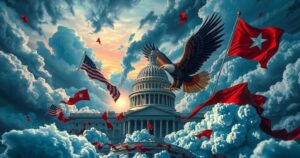Dark Money and Gray Money Drive Hidden Agendas in Election’s Final Days

In the final days of the election, dark money and gray money are being used to obscure campaign funding sources. A notable instance occurred in North Carolina involving a misleading mailer funded by a super PAC linked to Democrats. As lax regulations allow more financial misdirection, tracking these funds has become increasingly hard since the Citizens United ruling. Advocacy groups express concerns over the implications for voters and democracy.
In the crucial final stretch of the election, a rise in so-called dark money and ‘gray money’ is complicating transparency in campaign funding. This surge is largely attributed to weakened regulations that enable operatives to obscure the origins of their funding, sometimes indefinitely. In a striking example from North Carolina, campaign materials featuring a sonogram of a fetus urged citizens to vote for anti-abortion candidate Randall Terry. However, the mailer was actually financed by a super PAC named Civic Truth Action, which has connections to Democratic donors aiming to support Vice President Kamala Harris.
The last days of the campaign are often seen as a playground for political controversies. The message from Civic Truth Action aimed to mislead voters by presenting itself as supportive of Terry while actually shifting votes away from Donald Trump. This tactic is illustrative of a broader pattern, as groups back both Harris and Trump exploit loose regulations in fundraising to pour substantial amounts into campaign efforts focused on undecided voters in critical states.
Since the Supreme Court’s 2010 Citizens United decision allowed for unlimited political spending, tracking these financial flows has become increasingly challenging. There are concerns that the ruling’s promise of greater transparency has not materialised. “The ability to hide funding for those types of things is attractive for people who want to engage in dirty tricks,” said Ian Vandewalker, an attorney at the Brennan Center for Justice. His recent analysis reflects a notable uptick in funding from obscure sources to super PACs. More than ever, the issue of money in politics seems tangled in layers of complexity, particularly as Election Day approaches.
As the election nears its end, the trend of dark money and gray money reveals growing concerns about transparency in campaign financing. With groups leveraging lax regulations, misdirection tactics are becoming common, as shown by the Civic Truth Action mailers. Many worry that the initial promise of increased transparency following the Citizens United decision remains unfulfilled, allowing for a murky political landscape that undermines the democratic process.
Original Source: www.nytimes.com







